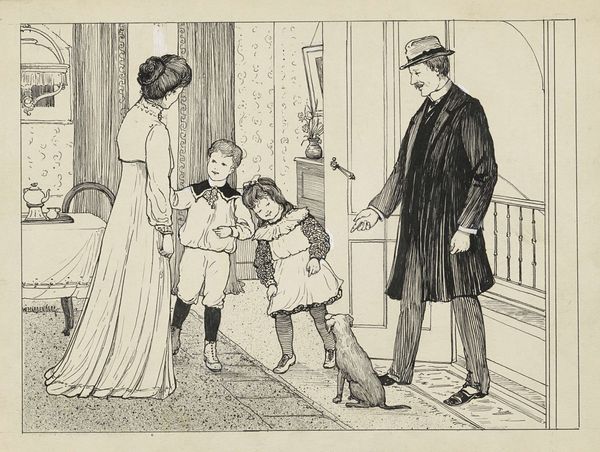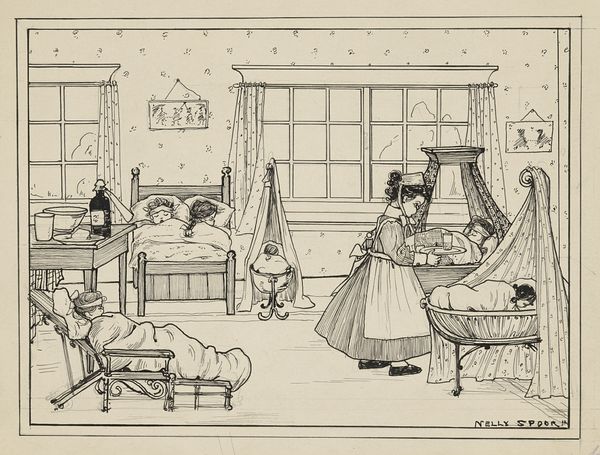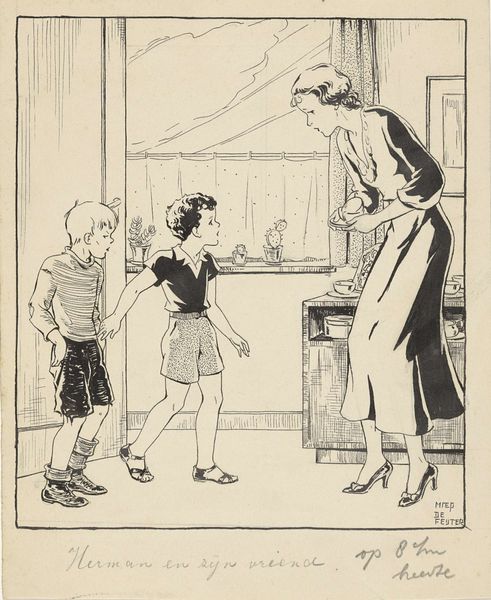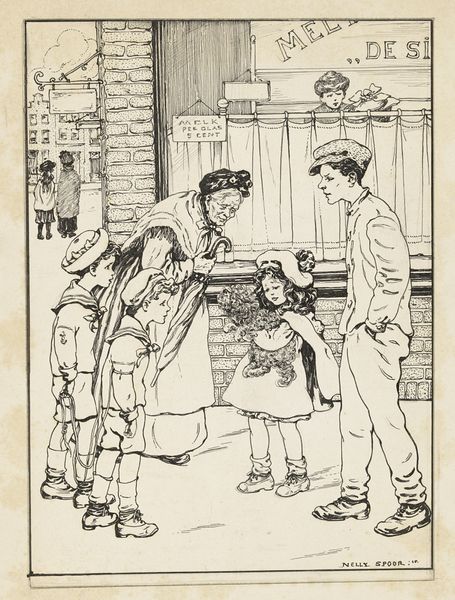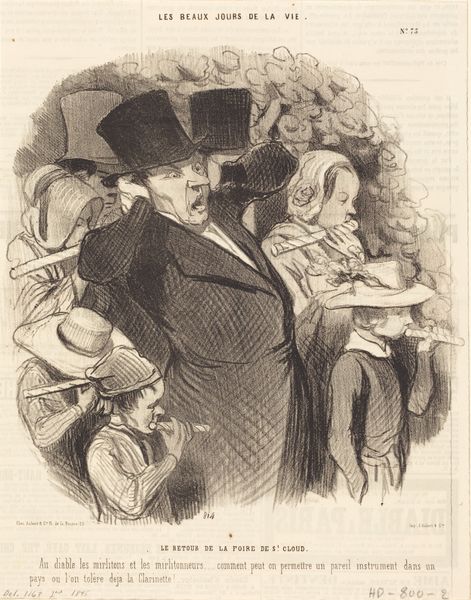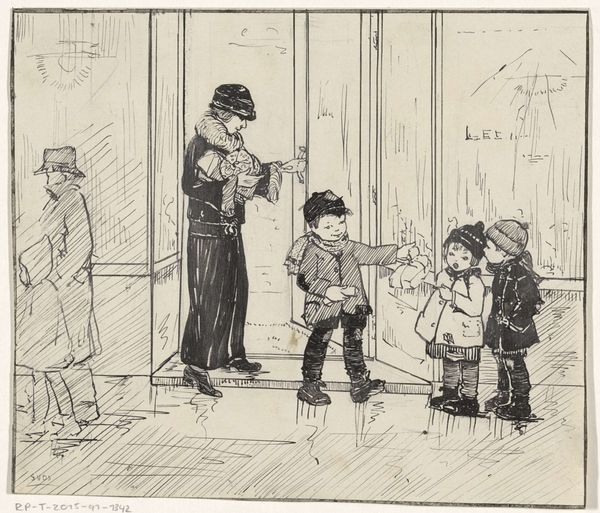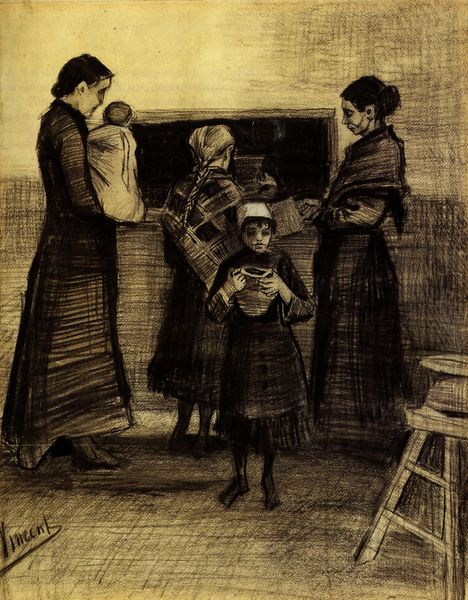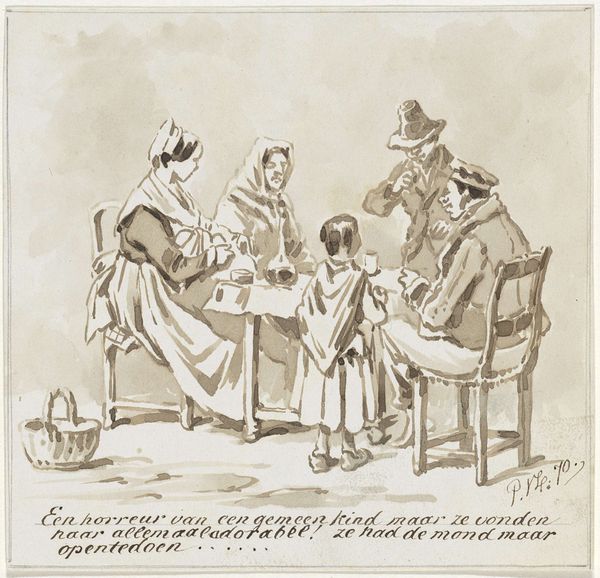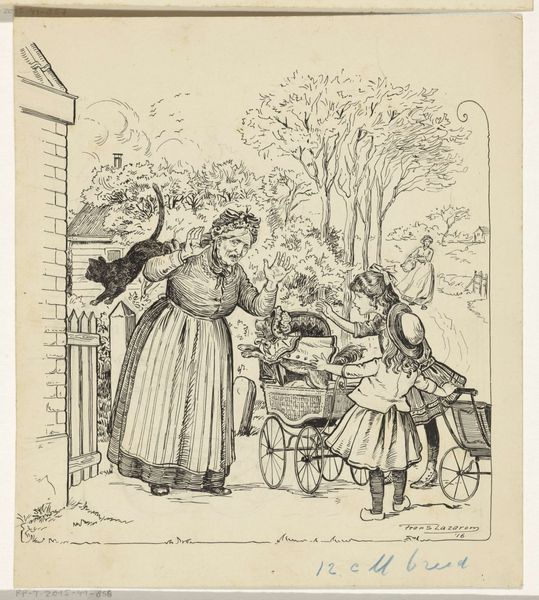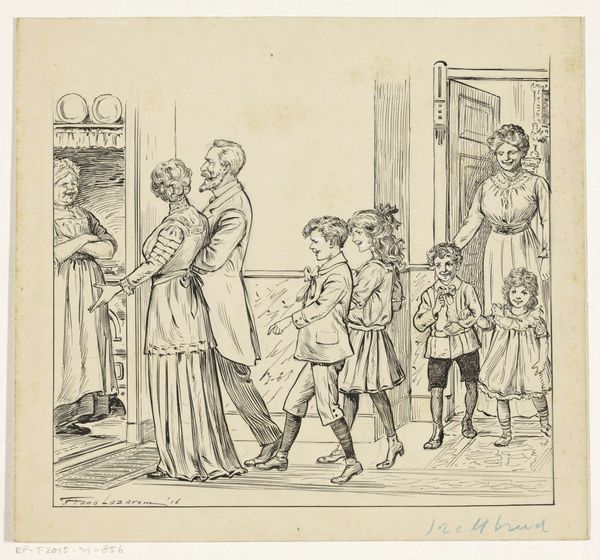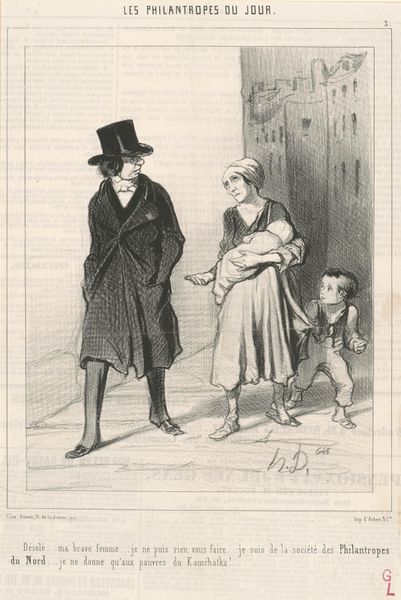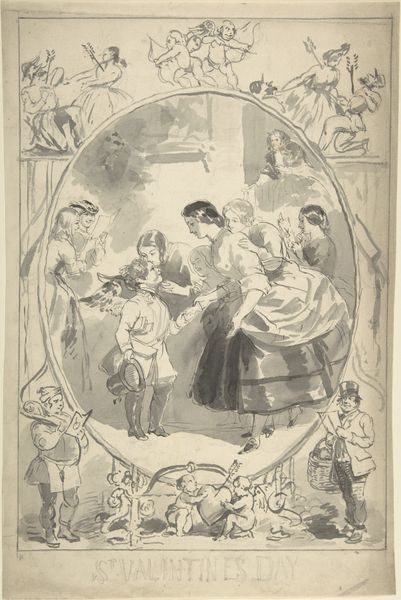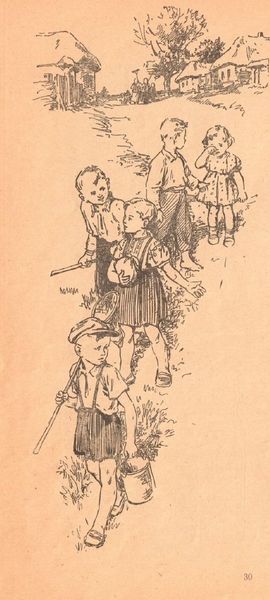
After Fifteen Years, When She Refused Him He Vowed He Would Never Marry 1903
0:00
0:00
drawing
#
drawing
#
narrative-art
#
figuration
#
classicism
#
genre-painting
#
academic-art
Copyright: Public Domain: Artvee
Curator: Let’s take a look at a pen-and-ink drawing by Charles Dana Gibson, dating back to 1903, with the rather lengthy title, "After Fifteen Years, When She Refused Him He Vowed He Would Never Marry." Editor: Immediately, I am struck by the visual tension. The stark contrast, created solely with lines, really heightens the drama of the scene. The resolute figure facing away from the advancing family conveys the mood quite clearly. Curator: Gibson's focus here aligns with what he became known for: depicting social dynamics of the turn of the century, especially the complexities of relationships between men and women in a rapidly changing social landscape. His "Gibson Girl" became an iconic representation of feminine beauty and independence, influencing standards of elegance and style. Editor: Absolutely, that iconic "Gibson Girl" is on display. She's elegantly rendered, but look at the family advancing from the right—they create a linear pattern that, for me, seems almost menacing, a visual representation of societal pressure bearing down upon the independent woman. Curator: Indeed, and it seems Gibson used this visual structure to critique that very societal pressure. A marriage refusal then, especially after such a courtship, would have serious repercussions within her community. The drawing provides social commentary using a refined, academic aesthetic, inviting a wider audience into its discourse. Editor: I'm also curious about Gibson’s rendering style here. Notice the varied weight and directionality of his lines. These create a dynamic interplay of light and shadow. He manages to convey texture and form with extraordinary economy, adding significant layers of depth. Curator: Good point, the dynamism really shows Gibson's skill as an illustrator; the drawing, published in newspapers and magazines, reached a vast audience. It served both as entertainment and as a mirror reflecting contemporary social values, and, arguably, highlighting their potential oppressiveness. Editor: I come away from this seeing it as more than a reflection of its time. The visual devices at play, the balance of light and dark, the arrangement of figures – these grant the drawing a timeless quality that speaks to enduring societal tensions around love and freedom. Curator: And it also shows the skill needed to present such a complicated story in a single drawing.
Comments
No comments
Be the first to comment and join the conversation on the ultimate creative platform.
